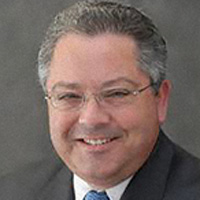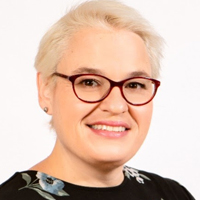
In 2024, Spot TV Is All About Political

After a challenging economic year in which spot television spending is flat to slightly down, TV stations are eagerly anticipating the predicted record-setting political spend of 2024.
Overall political advertising spending — including on presidential, gubernatorial, Senate, House and state elections as well as on issues — is predicted to reach between $10.2 billion (according to AdImpact) and $11.6 billion (according to CMAG Vivvix). Those numbers depend on how much money gets raised overall, and that’s predicted to be between $19 billion and $20 billion, says Steve Passwaiter, president, Silver Oak Political. That would significantly exceed the $16.7 billion that was raised in the 2022 midterms.

Steve Passwaiter,
If those numbers hold, 2024 will be the most expensive year on record for political spending, beating 2020’s $9.02 billion by more than $1 billion, according to AdImpact, which released its 2024 predictions earlier this month.
Of that $10 billion or so in political spending, 40%-45% will be spent on traditional over-the-air local TV broadcast, while another 4%-5% will be spent on local connected TV (CTV), bringing the total spend on all local TV platforms to $5-plus billion. That’s almost double what political campaigns spent on local TV in 2016, when it hit $2.6 billion, and up 13% from 2020, when politicians spent $3.94 billion on spot TV, according to S&P Global Market Intelligence.
While stations welcome that much political spending, they only have so much inventory, particularly on their main channels. Inevitably, the increased number of political ads will push out traditional spot TV advertisers — such as automotive, legal, travel, packaged goods and so forth — forcing core spot spending down.

Rob Weisbord,
“There will be crowd-out in markets that get heavily political,” says Rob Weisbord, Sinclair chief operating officer and president, local media. “In a political year, you see traditional spot down slightly because of pricing and lack of avails.”
“In political years, it usually flip flops, so in 2024, total will be up 17% to 20% while core will be down low single digits,” says Steve Lanzano, TVB president.
Spending on CTV is on the rise, especially as reach declines due to cord-cutting.
“We should see an explosion in CTV revenue for a couple of reasons,” Passwaiter says. “The declines in reach in linear continue. That’s a leaky bucket and every cycle the numbers are 7% to 10% lower in reach than they were in the previous cycle. CTV is doing a nice job of filling that gap. There’s an ability to get reach with CTV, it has targeting capabilities that everybody likes and now there is more inventory available because there are more players in the market.”
While the race that everyone focuses on tends to be the presidential, spending on that campaign is only about 30% of the picture. How that spending will shake out in 2024 depends on a few factors.
If President Joe Biden and former president Donald Trump end up being the Democratic and Republican nominees, respectively, spending on presidential campaigns could be curtailed, especially because Trump is likely to rely on earned media as rising legal expenses force his campaign to temper its spending.
Democrats, conversely, might end up spending more on the presidential race if they decide to use advertising as a proxy for 80-year-old Biden hitting the campaign trail, says Justin Nielson, principal research analyst at S&P Global Market Intelligence.
Down ballot races — as far down as state attorney general and judge races — are expected to create spending on local media next year as well. And spending on issues — such as reproductive rights, crime, immigration and education — also could generate quite a bit of cash for stations.

Tom Fleming
“What’s great about political right now is take a topic — whether it’s reproductive rights, foreign policy, crime — and there are definitive opinions on both sides. That’s great for broadcast, great for what we do,” says Tom Fleming, Fox Television Stations SVP, advertising sales.
States expected to see strong spending in 2024 include purple ones such as Arizona, Georgia, North Carolina, Nevada, Michigan, Pennsylvania and Wisconsin. California will have at least one hot Senate race as the likes of Reps. Adam Schiff, Katie Porter and Barbara Lee and more campaign for the seat of Sen. Diane Feinstein, who plans to retire in January 2025. Those candidates will need to advertise in the expensive media markets of Los Angeles, San Francisco, San Diego and beyond.
Although there’s already been some spending this year, political advertising in earnest is likely to start in advance of next year’s primaries — particularly in early states like Iowa and New Hampshire — leading into Super Tuesday on March 5. If someone rises to challenge Trump, there could be an extended primary season, which would also extend spending. If Trump becomes the presumptive nominee, things are likely to stall until the fall.

Nicole Ovadia
“I’m expecting things to be resolved before Super Tuesday,” says Nicole Ovadia, BIA Advisory Services VP, forecasting and analysis. “If nothing major happens, things will quiet down in the middle of February and there won’t be much noise until we get closer to the general election.”
“If you look back on 2020, Trump spent more in the third and fourth quarter, which is typical,” Nielson says. “I don’t feel like Trump is going to spend that much in the primary because he thinks he has that pretty buttoned up.”
There’s already been spending on political in 2023, with three gubernatorial races taking place in Louisiana, Kentucky and Mississippi and a few special elections. “Spending has been higher than normal for an off year,” Lanzano says.
Another bright spot in 2024 should be the 2024 Summer Olympics in Paris, which could provide NBCUniversal Local stations and affiliates with another $500 million-750 million in incremental spending.
The coming spending is much anticipated by station groups. While a predicted recession never materialized in 2023, it still has been a difficult year. Inflation remained high and interest rates kept going up, which had the intended effect of slowing consumer spending — never a desired result for advertisers, that pulled back on spending.
The writers’ and actors’ strikes — now in their fifth month — are starting to show an impact on TV station budgets as fall TV premieres with very little new scripted TV on the schedule. Possibly hurting stations even more in the fourth quarter are the decisions by several day-and-date talk shows — CBS Media Ventures’ Drew Barrymore, CBS’s The Talk and Warner Bros. Discovery’s Jennifer Hudson — to delay their season debuts until the strikes conclude.
“The writers’ strike doesn’t help. You’ve got more reality on the schedule and no first-run scripted. The premium you would get for those kinds of shows is missing,” Weisbord says.
That said, this fall NFL and college football is giving broadcast TV a good return and serving as a bit of a bulwark against the lack of new scripted fare in primetime.
“Sports has been a focal point of Fox’s strategy,” Fleming says. “We’re in our wheelhouse with the NFL, college football and the World Series. There’s no indication that people will shy away from advertising in these properties.”

Steve Lanzano
Automotive, which has been a challenged sector since the pandemic, finally started to see a comeback this year, with car dealerships needing to move inventory as high prices and high interest rates stilled consumer spending. But the United Auto Workers strike that started Friday, Sept. 15, threatens to slow that flow.
Besides auto, other categories that remain strong are legal services, pharmaceutical, home renovation and travel. “Legal continues to be the No. 2 category behind auto,” Lanzano says. “And pharma is spending more with these new weight-loss drugs coming out.”
But Lanzano says the focus will be on political next year, while core takes a back seat. “In 2024, just like it does every other year, political will overshadow everything else.”
































Comments (2)
Douglas says:
March 26, 2024 at 10:04 am
Hi
Douglas says:
March 26, 2024 at 10:05 am
Stations expect to reap $5-plus billion from political spending on linear and CTV platforms next year.
https://www.linkedin.com/posts/tvb_2_in-2024-spot-tv-is-all-about-political-activity-7111003230137942016-VO1s